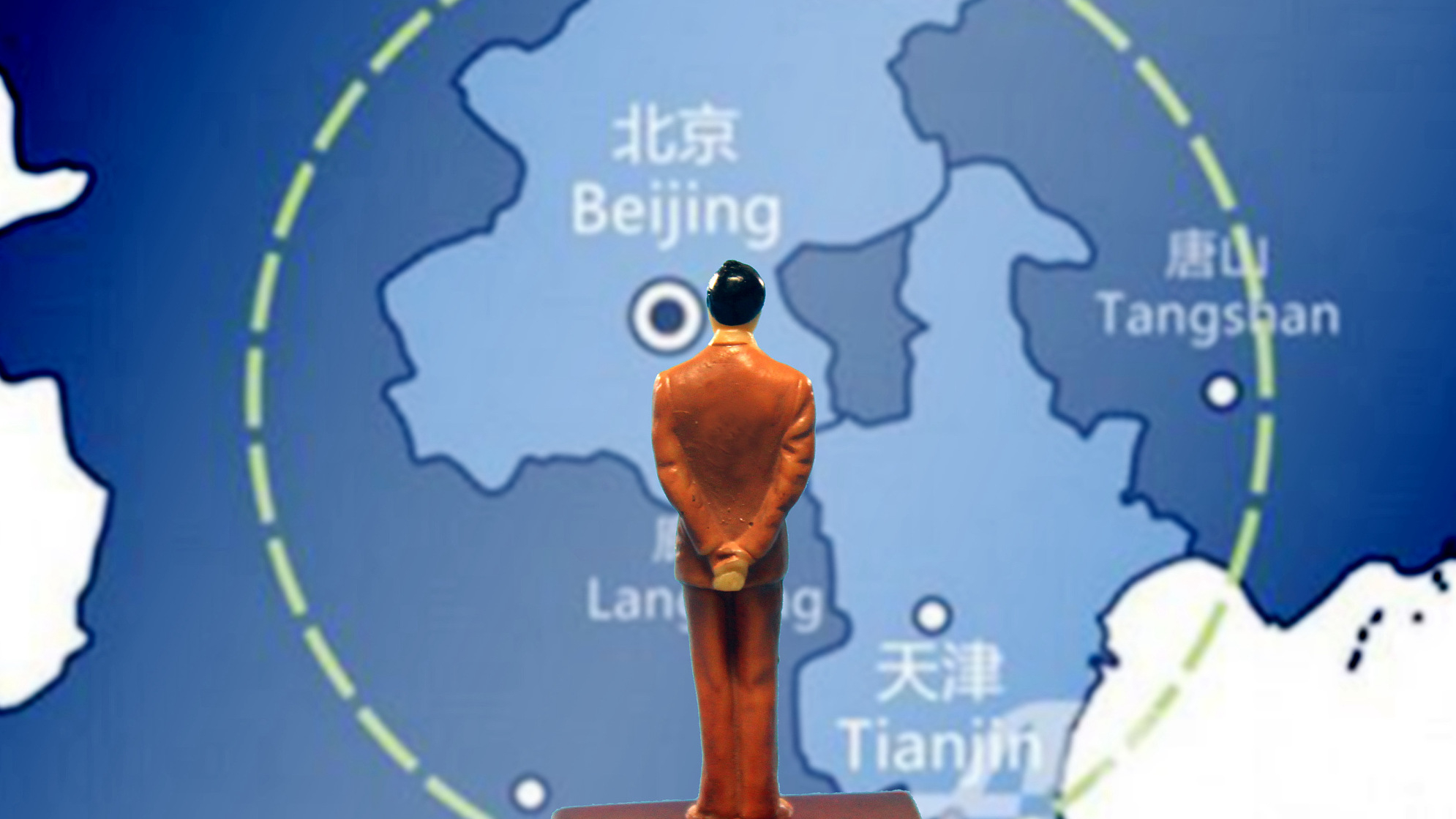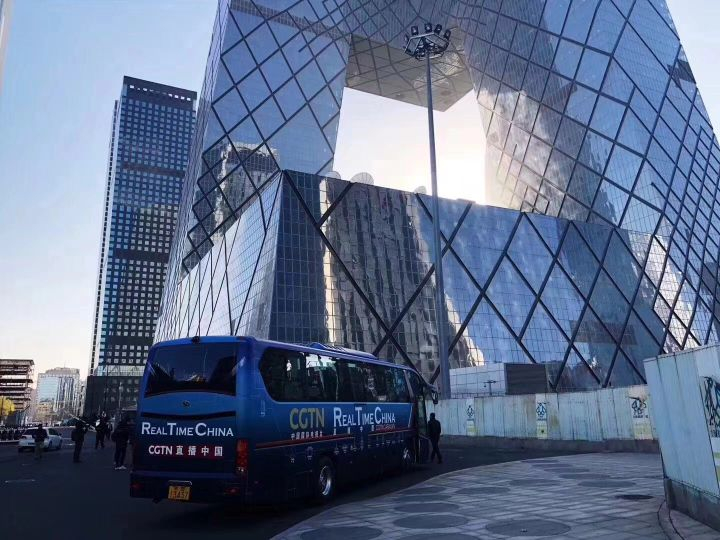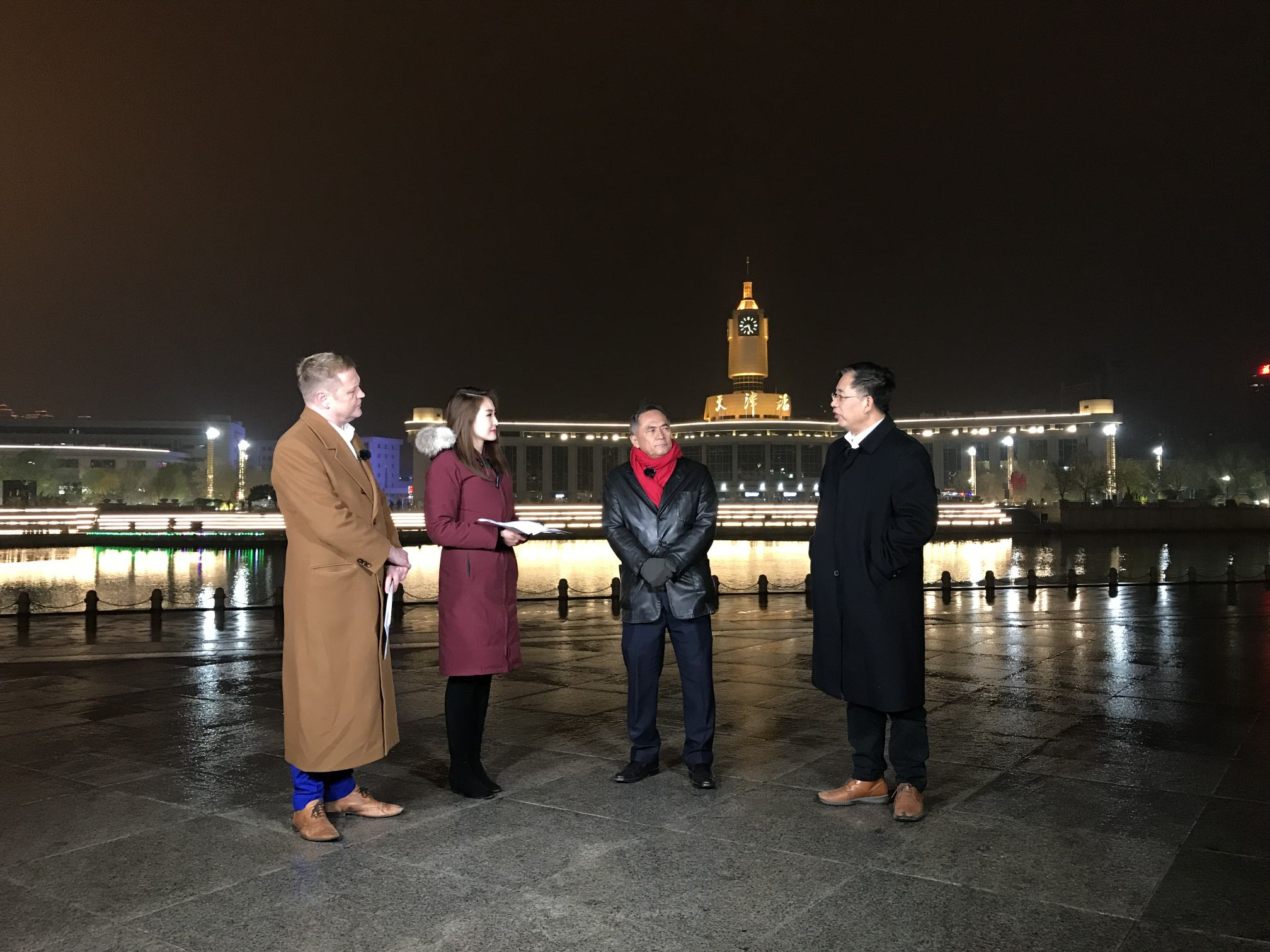
Opinions
11:41, 07-Dec-2018
Perspective: Real Time China – a journey of rediscovery
Updated
10:50, 10-Dec-2018
Liu Baocheng

Editor's note: Liu Baocheng is a professor at the University of International Business and Economics based in Beijing. The article reflects the author's views, and not necessarily those of CGTN.
It's a unique mission. Before embarking on the CGTN Real Time China Caravan, I thought it would be simply a hometown tour; all the places on the itinerary are within footprint radius. However, as the program unfolded, I began to realize its richness and ambition.
It turned out to be a journey of rediscovery. Under the large context of Beijing-Tianjin-Hebei regional integration, as the caravan moved along, we dug deep into issues like traffic congestion in Beijing, function of Langfang as a satellite city to Beijing, Yangliuqing Town endowed with rich traditional art, and ended up in Jinwan Square as center of Tianjin alongside the mouth of the Hai River.

The CGTN Real Time China Caravan is seen parked near the CCTV headquarters in Beijing, China on December 5. /Photo by Liu Baocheng
The CGTN Real Time China Caravan is seen parked near the CCTV headquarters in Beijing, China on December 5. /Photo by Liu Baocheng
Obviously, it's not a nice season for a tour in the vast north China plain. But compared with our special mission, the cold and hazy weather in no way to dampen our passion. For all Chinese people, December 18 is more memorable than Christmas in the Western world. Exactly four decades ago, it is this particular date that saved the Chinese nation from literal bankruptcy.
The resolution by the 3rd Plenary Session of the 11th Central Committee of the Communist Party of China in December 1978 put an end to the ideological stereotype of class struggle and decisively shifted the country's focus onto economic development. As a result, creativity and productivity erupted, and thus leading to today's prosperity.
China's miracle is attributed to the reform and opening-up policy masterminded by late Chinese leader Deng Xiaoping. The process was pragmatically gradual through trials and errors. Deng once described managing the economy as crossing the river by feeling the stones.
Successful experiments from a defined area and sector were able to spread into larger regions and more sectors, whereas unsuccessful results were well contained. In retrospect, it has been the wisest approach to pursuing economic development while maintaining social stability.

CGTN staffs and experts gather in Tianjin for the CGTN Real Time China program on December 5. /Photo by Liu Baocheng
CGTN staffs and experts gather in Tianjin for the CGTN Real Time China program on December 5. /Photo by Liu Baocheng
Nowadays, with experience gathered, with vision expanded through trade and investment around the globe, and with the current leadership of President Xi Jinping, the reform and opening-up policy has elevated to a new height with the aim of raising the quality of life for the entire nation while assuming global responsibility and contributing to the 17 UN Sustainable Development Goals.
Regional integration is placed at the top of the agenda, allowing freer flow of all economic resources by dismantling local barriers. The Pearl River Delta, the Yangtze River Delta and the Bohai Bay areas are designated as the forerunners for such endeavor.
The Bohai Bay area which entails the Beijing-Tianjin-Hebei integration is selected for coverage during the first phase for CGTN Real Time show. Thanks CGTN for this exciting tour, what a privilege to get the chance to observe and comment on the vast changes that have taken place in my home region! More joyfully, we are able to expect in the near future more profound changes in structural reform, technological innovation, and tougher environmental protection.
(If you want to contribute and have specific expertise, please contact us at opinions@cgtn.com.)

SITEMAP
Copyright © 2018 CGTN. Beijing ICP prepared NO.16065310-3
Copyright © 2018 CGTN. Beijing ICP prepared NO.16065310-3